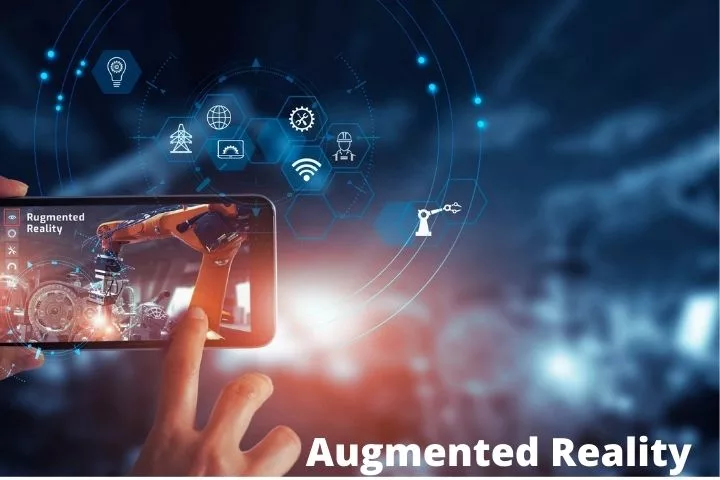Augmented Reality: Working And Applications For Industry, Education & Trade

Many teenagers and young adults were walking around in 2016, staring hard at their smartphones and cursing or cheering for reasons that were not visible. They played Pokémon Go, the first game to use augmented reality, which gave this technology its breakthrough. In this article, you can find the Augmented Reality applications in industry, education & trade
Since then, it has been well on the way to becoming suitable for the masses. Augmented reality is already used in many areas of industry, trade, and education.
You can read examples of this in this guide. We also explain what the differences are to virtual reality.
How Does Augmented Reality Work?
Augmented Reality (AR) is part of the so-called reality-virtuality continuum. Find the applications of Augmented Reality in industry, trade.
In between, there are sub-areas in which reality and virtuality are mixed to different degrees ( Mixed Reality). A distinction is made between augmented reality and augmented virtuality.
In Augmented Virtuality, it comes to a virtual world in which a person, by, for example, a VR glasses is, real information is enriched me.
The person hears the (real) tone of the doorbell through the headphones of the virtual reality glasses when someone is standing at their front door.
From a purely technical point of view, augmented reality fulfills the following points:
- Enrichment of Reality with virtual information.
- Addressing all sensory perceptions is possible, but currently mostly optically.
- Information appears in real-time to match reality.
- Real and virtual elements have a three-dimensional relationship to one another.
There are everyday examples here that many are sure to be familiar with. For example, when analyzing a soccer game, distances to opponents or the trajectories of the ball are shown with virtual markers while the relevant scene is being played back.
Even when ski jumping, the jump distances of the individual competitors are displayed on the landing lane.
Strictly speaking, even the announcement in public transport can be assigned to AR technology. Because today this announcement usually comes off the production line and is started when software finds the right time for it by means of location analysis.
Of course, there are numerous AR applications that go beyond such everyday things. We present these to you in the corresponding section in this guide.
Differences between AR and VR
The difference between augmented Reality and Virtual Reality is the degree of virtuality. Augmented reality shows the real world, which is supplemented with virtual aspects; for example, the user is in the supermarket and can view their shopping list with AR-enabled glasses. This seems to stick to the walls of the supermarket.
In Virtual Reality, the user is completely immersed in it and at that moment no longer has any contact with the real world. For example, interested parties can explore a new building that has already been planned but not yet built.
Which devices do you need for an augmented reality experience?
Depending on the area of application, there are different devices that support augmented reality applications.
They have one thing in common: They need appropriate hardware and software components, which can now also be found in every newer, high-performance smartphone and tablet:
- Cameras and GPS sensors capture the real environment.
- High-resolution display, microphone, and headphones as an interface between the real environment and the user. Commands are recorded, and AR content is visualized, set to music, and made tangible.
- Powerful processors for data processing so that everything happens in real-time without jerking.
- Large memory and long battery life, as these processes still represent a high technical load.
- Software programs to read out camera images, GPS data, and user commands and to enrich them with details from existing data sources. Then the visual, auditory, or sensory enhancements are embedded in the real world in real-time.
Advantages
It may all sound very futuristic to you, but in fact, many salespeople are already using this technology. The best-known examples are certainly IKEA, but augmented reality can also be worthwhile for smaller retailers.
The customer can see the product where it is to be used. He simply takes it directly into the living room, on the terrace, or in the garage.
He not only sees how the colors harmonize, for example but also whether the size is optimal. This increases customer satisfaction significantly and reduces returns and complaints! Before the final order, the customer knows exactly what he is getting into and looks forward to his newly purchased product!
Examples
A ring doesn’t necessarily have to be seen in hand before buying it. But for many other industries, it makes sense because online buying is made easier by augmented reality.
These include, for example:
- furniture
- Decorations
- Glasses
- clothing
- Wallpaper
- and much more
In principle, the question of whether augmented reality makes sense for the product can be answered using a simple criterion: Does the product have to fit into an environment?
For example, it becomes part of your product
- an interior decoration (piece of furniture),
- the front of the house (curtains)
- or a face (glasses)?
Then you should think about taking the next step and offering your customers a configurator with augmented reality.
This not only sets you apart from the competitions. In addition to customization, they also offer the customer another great extra.
After all, the customer is not only given the opportunity to design the product according to their ideas. Instead, he immediately sees how the whole thing will work in reality. That simplifies the purchase decision!






